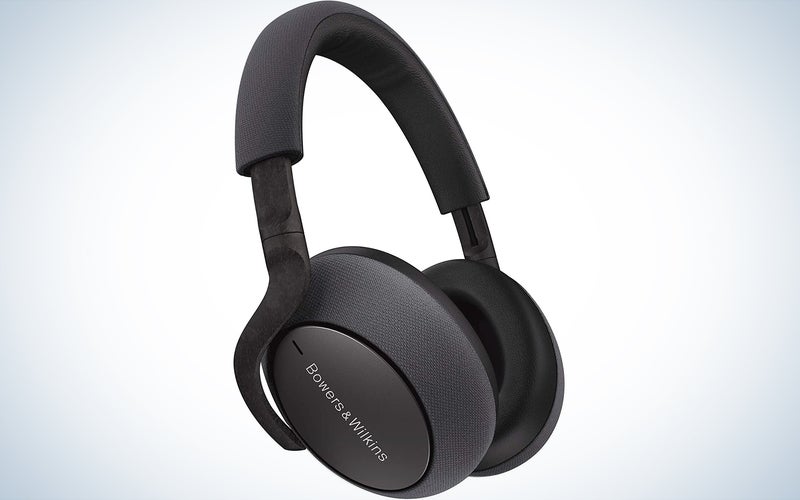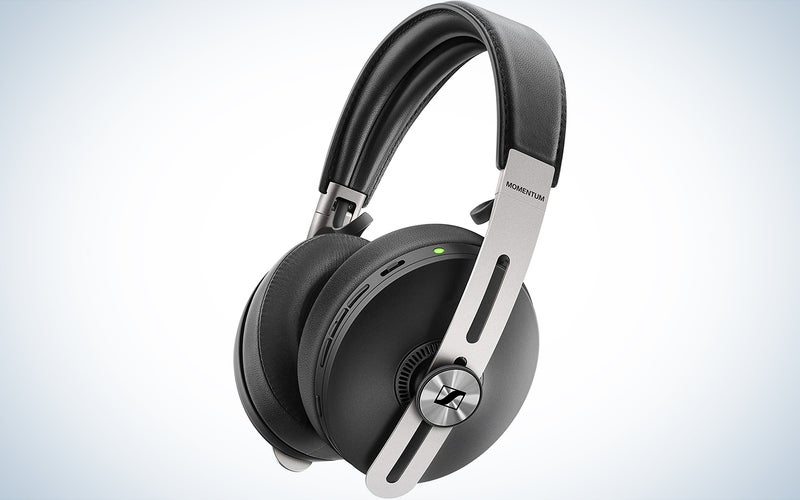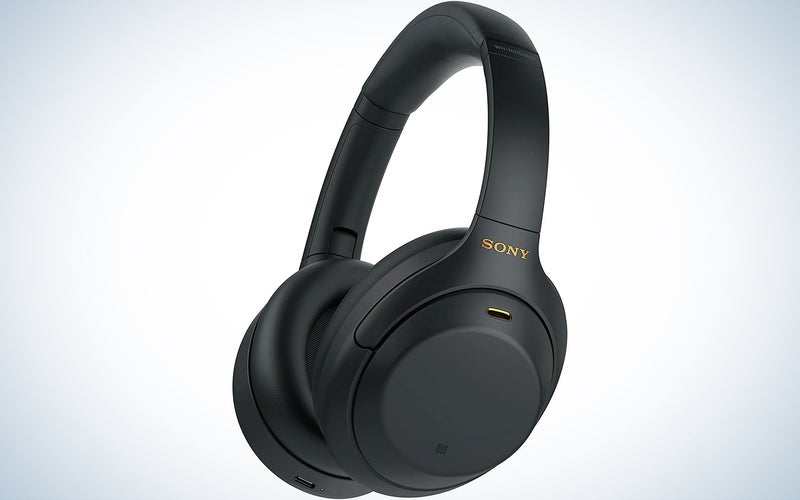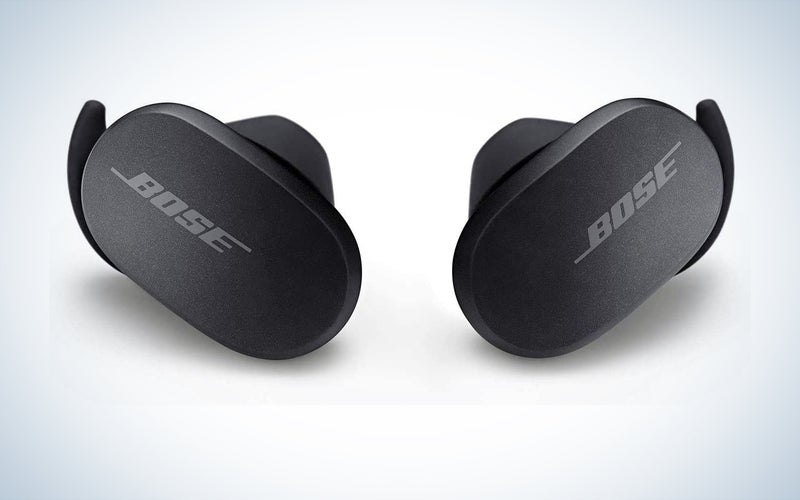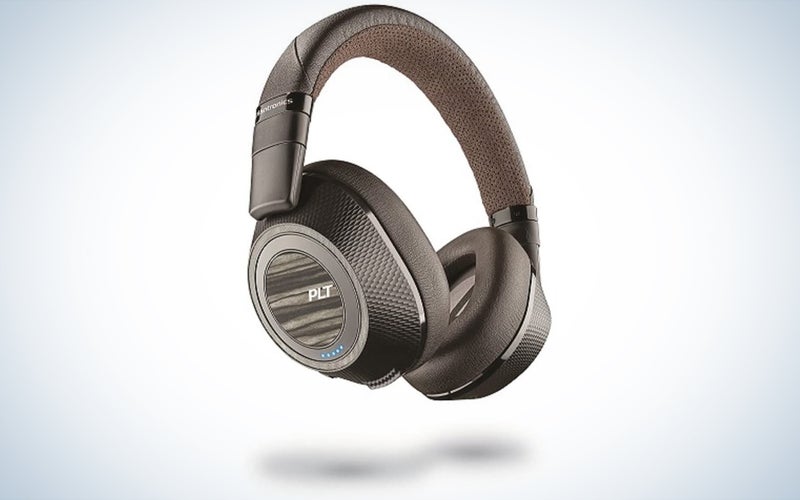Best wireless headphones for everyday listening
No more tangled wires! Wireless headphones are ready to quickly connect you to your favorite music, movies, podcasts, and people with the push of a button.
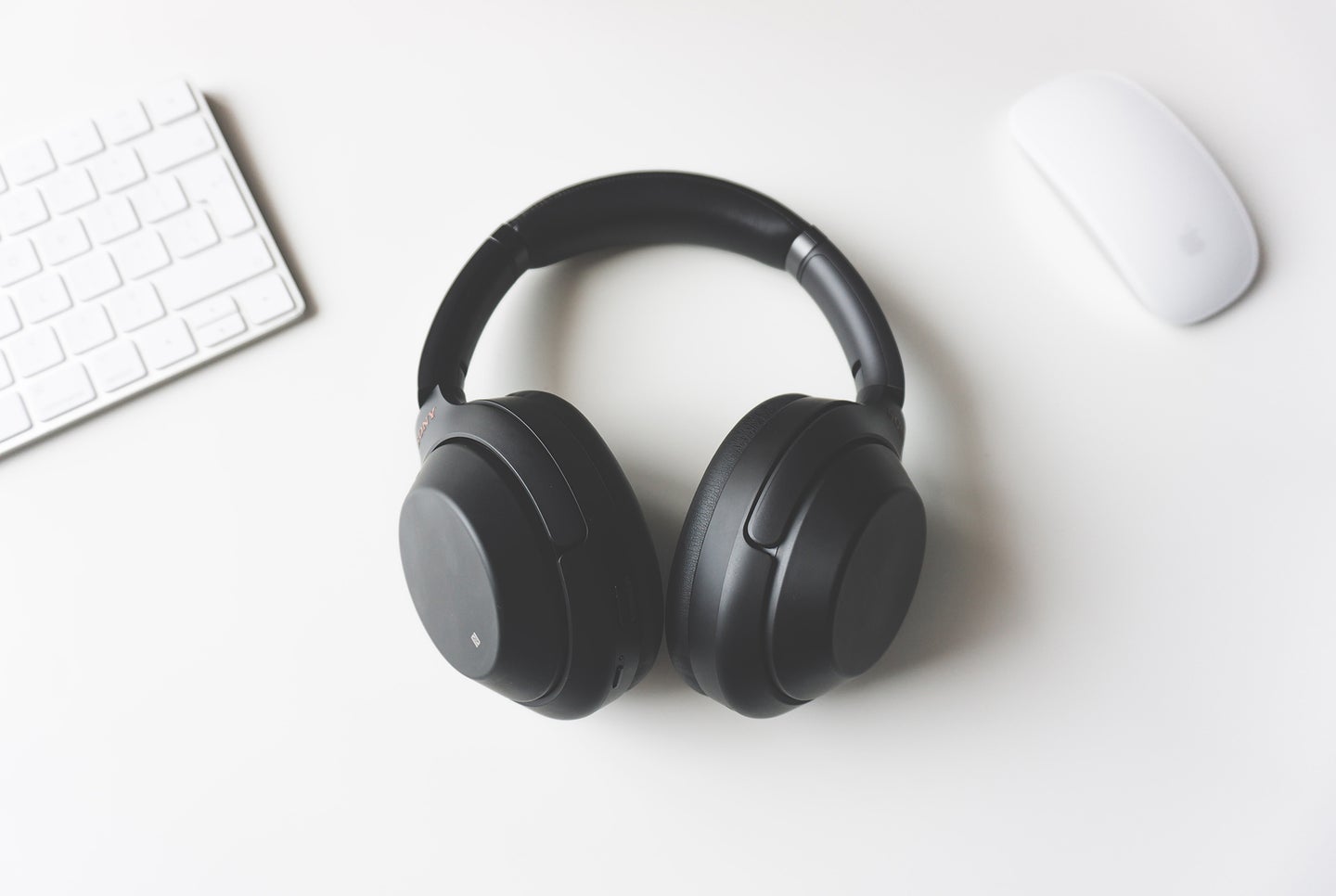
We may earn revenue from the products available on this page and participate in affiliate programs. Learn more ›
Long gone are the days of tangled-up wires that take forever to undo. You shouldn’t have to attempt to undo the Gordian knot in order to get access to your favorite music and podcasts. You’d be surprised what a difference it makes when you don’t have to constantly plug and unplug your headphones. Thankfully, there are a ton of great options out there for wireless headphones. Rock out to your workout jams without worrying about ripping the buds out of your ears, answer the phone seamlessly while you’re out grocery shopping, or easily listen to the updates on the big game while cooking dinner at home. Many wireless headphones now come with long battery life, noise-canceling capabilities, and many other features to make connecting to your smartphone or computer easier than ever. The best wireless headphones are designed with your listening experience in mind; it’s pretty impressive how powerful the sound can be, with booming bass and clear high end coming from such a tiny source. We have put together a list of the things we think you should consider when picking out a new pair of wireless headphones, as well as some suggestions to get you started.
- BEST WIRELESS HEADPHONES FOR BATTERY LIFE: Bowers & Wilkins PX7
- BEST SOUNDING WIRELESS HEADPHONES: Sennheiser Momentum 3
- BEST NOISE-CANCELING WIRELESS HEADPHONES: Sony WH-1000XM4
- BEST LIGHTWEIGHT WIRELESS HEADPHONES: Bose QuietComfort Earbuds
- BEST LONG-RANGE WIRELESS HEADPHONES: Plantronics Backbeat Pro
- BEST BUDGET WIRELESS HEADPHONES: Anker Soundcore Life P2
Things to consider when buying wireless headphones
As you begin your journey towards wireless listening, there are a few things you should keep in mind when scouring the virtual shelves. The best wireless headphones pride themselves on long-lasting battery life, noise-canceling capabilities, audio quality, portability/weight, and connectivity/range. Demonstrated excellence and the inclusion of these features is key when it comes to finding a pair of headphones that will last, live comfortably in your ears, and do the music you love justice. Most of us put on a pair of headphones every day, whether that’s for relaxation, exercise, business, or phone calls. No one wants to settle when it comes to products that get that much use; so we have put together a more in-depth guide to let you know what you can expect and what you might want to prioritize when it comes to wireless headphones.
How much battery life do you need?
Long battery life is one of the most important features your wireless headphones should have. Imagine trying to power through a tough workout and your pump-up playlist stops mid-run, or you are on the phone while carrying home a week’s worth of groceries and suddenly you need to go handheld. What do you do if you’re on a long flight and one hour into the trip your headphones die, your seatmate is snoring and the built-in chair outlet doesn’t work? Short battery life is an inconvenience that we don’t recommend trying to deal with. Luckily, there are plenty of great options for wireless headphones that have super impressive batteries typically lasting between 20 and 30 hours without sacrificing sound quality or other important features. The best wireless headphones will let you know in advance, either with a beeping tone or flashing light when the battery gets low, and most provide a battery monitor that will be displayed on your listening device.
Keep in mind that unless you are specifically using Apple Airpods and an iPhone, your wireless headphones probably won’t be compatible with your phone charger. Even though the battery-life on many wireless headphones is typically long-lasting, plan to charge regularly to ensure that you never lose a charge in the midst of an important task or time. It ranges from difficult to impossible when it comes to listening while your headphones are charging—so it can’t hurt to plan ahead.
Best long-battery life wireless headphones: Bowers & Wilkins PX7
Amazon
The PX7′s from Bowers & Wilkins are top of the line when it comes to wireless headphones that can last forever. They boast an impressive 30 hours of battery life with a single charge, plus a 15 minute “quick charge” will give you 6 more hours of listening. These headphones are also equipped with active noise cancellation and will pause your music whenever you take your headphones off. The design is comfortable, no squashed ears, and the control panel for volume adjustments is simple and straightforward. Stay connected for the entirety of your travels (or an outdoor movie marathon).
How important is sound quality to you?
Overall sound quality is one of the most important things for all music listeners. We know there are so many things to listen to and so many conversations to have using your wireless headphones, but we also know that some of you are particularly excited to listen to your favorite music anytime, anywhere, doing any activity. Cutting out extra cables does not mean cutting down on clarity when it comes to your music, this is where drivers come in. A driver is essentially a small speaker found in any pair of headphones that receives the signal from your device and guides the music into your ears. There are a few different types of drivers: dynamic, planar magnetic, electrostatic, and balanced armature.
Dynamic drivers are found frequently in over-ear wireless headphones because they sound great up to a certain volume at which distortion can occur, but there is a good chance you won’t need to blast your music loud enough to get to that point. Balanced armature drivers are frequently found in in-ear headphones. They can be a little bit more expensive than dynamic drivers, and produce really excellent treble frequencies but can leave a little to be desired when it comes to a booming bass. Planar Magnetic drivers are usually a little heavier, more expensive, and more accurately reproduce sound; they are typically found in over-ear headphones but sometimes require external power. Electrostatic drivers are pretty rare, much more expensive, and require a special amplifier to operate.
We are primarily concerned with dynamic drivers, which you will find in a variety of sizes. Typically, the larger the driver the louder the sound can get. Some larger drivers can also support lower frequencies better than their smaller contemporaries. You probably don’t need to base your entire purchase on the size and type of driver, but it can affect your overall sound and it’s important to know as you become more familiar with what’s available.
Best sounding wireless headphones: Sennheiser Momentum 3
Amazon
The Sennheiser Momentum 3 headphones really do deliver beautiful sound. They include 42-millimeter drivers that can exquisitely produce detailed high treble and middle ranges with a punchy bass that isn’t overwhelming. Plus, you can customize the level of noise-cancellation you want which makes them perfect for various activities. Other special features include automatic on/off which helps to preserve battery and Smart Pause which is triggered when you remove the headphones. The design here is really sleek and the padding is extremely comfortable. Not only will you get a great sound but you’ll look good while listening.
Do you need to filter outside noise?
If you’re trying to tune out the rest of the world and focus on your favorite radio show or get a lot of work done remotely without being bothered by your roommate’s constant cooking you will want to prioritize a pair of headphones with noise cancellation. Chances are you’re familiar with the concept of noise cancellation, but what exactly is it? It turns out there are two kinds of noise cancellation: passive and active. Passive noise cancellation refers more to the overall design of the headphones. It cancels out sound by creating a literal barrier between the outside world and your ears, think of the little ear muffs people give babies at concerts. It’s a pretty successful way to drown out other voices. Active noise cancellation utilizes more advanced technology to analyze the incoming noise and essentially produce a counter-sound that cancels it out. While the science of waveforms and phasing can get a little complicated, what you need to know is that headphones with active noise cancellation are able to drown out most if not all environment noises along with a chatty coworker. Think about the general din of being inside an airplane or hum of an air conditioning unit, with active noise cancellation all that disappears. Many wireless headphones are now equipped with active cancellation that you can turn on and off depending on your needs. Keep in mind that it is not always safe to use noise cancellation (or headphones in general) especially when biking, driving, hiking, or walking alone at night. This is where that on/off feature becomes so important, you can customize your listening experience based on your activities.
Best noise-canceling wireless headphones: Sony WH-1000XM4
Amazon
The WH-1000XM4′s by Sony are the best of the best when it comes to wireless headphones. They have 30 hours of battery life, a connectivity range of roughly 98 feet, and they sound amazing. They are specifically designed for listeners, so if you are hoping to use your headphones primarily for calls or during intense activities like running, you might want to try something else. For everyone else, these are the ones for you. Sony has recently updated its noise cancellation to include a special active processor that is constantly sampling ambient audio to accurately adjust its level of cancellation. Additionally, these headphones are equipped with a touch-capacitive control panel to skip songs, adjust volume, and play/pause. It should be known that these headphones are in no way waterproof, so you won’t want to bring them to your pal’s pool party.
Lightweight or ultra-lightweight?
Weight and general portability can mean a lot to a frequent headphone user. Of course, you don’t want something that is going to weigh you down or make your neck cramp up and that is pretty easy to avoid. Weight is ultimately determined by style: in-ear wireless buds or pods will typically weigh significantly less than over-ear headphones. Over-ear models are still fairly light- the average weighing in at about .60 pounds. In-ear headphones are also generally more portable because they are typically stored in small cases that easily slide into coat pockets, small purses, etcetera. Over-ear headphones are a bit bulkier, though some fold up, and they are statistically harder to lose because of their size (no one wants to lose just one earbud). Over-ear styles are also typically more successful when it comes to overall audio quality and noise cancellation because many have larger drivers and employ active cancellation technologies with passive cancellation built into the design, however more and more earbuds are harnessing the powers of active cancellation. For the most part, this really does come down to personal preference; if you are looking for the most portable, lightest wireless headphones on the market, then we suggest browsing some top tier in-ear buds.
Best lightweight wireless headphones: Bose QuietComfort Earbuds
Amazon
The Bose QuietComfort Earbuds are super portable and deliver the same great audio quality and noise cancellation as over-ear models. Coming in at roughly .018 pounds, these earbuds can play for up to 6 hours in a single charge with 12 more hours stored in the equally portable charging case. They are sweat and weather resistant so you don’t have to worry about the effects of a big workout. Plus they have 11 modes of noise cancellation including transparency mode so you can hear your surroundings when it’s important. Manage all the earbud’s various settings using the Bose Music app and easily adjust volume, skip songs, and more by tapping the outer touch controls.
How far do you want to roam away from your device?
Wireless headphones typically rely on a Bluetooth connection to stream audio from your device. Bluetooth headphone technology has greatly improved over the years and chances are any model you find will have a satisfactory range and steady performance. If you know you are someone who likes to put the phone down while you take care of some chores around the house or you don’t want to pause your podcast just to take the trash out then paying attention to the range of your headphones isn’t such a bad idea. Most recommended wireless headphones can stay connected between 30 and 100 feet, so you definitely have options. When it comes to headphones, you typically will not need a connection at greater than 100 feet. Thirty-three to 50 feels like plenty for us, plus losing that connection is a great reminder if you’ve accidentally left your phone behind.
If you obsessively check product reviews, as we do, then you might also want to see if people report dead zones or dropouts when using their headphones. Some Bluetooth technology can become overwhelmed in crowded areas where signals get crossed. We recommend checking out a few products that boast Bluetooth 5 connectivity, these are reported to deliver high-resolution audio playback with less latency.
Best long-range wireless headphones: Plantronics Backbeat Pro
Amazon
If an extended range is truly the most important thing to you, we recommend checking out the Plantronics Backbeat Pro. These headphones have a wireless range of up to 330 feet, the longest range we’ve seen so far. They also boast 24 hours of battery life on a single charge as well as active noise cancellation. With 40-millimeter drivers, the bass comes out sounding great and the treble/middle range comes through clear. You will be able to hear loud and clear no matter how far away you are from your device (practically).
Brands to know
As you start to browse for a new pair of headphones there are a few brands you should keep in mind: Sony, Sennheiser, and Bowers & Wilkins. These three companies have been pioneers in the audio industry for decades and their wireless headphones are top of the line. After years of dedicated research, we are confident that their products take into consideration all of the important features we have outlined in our guide.
Sony
The Sony Corporation started out as a Japanese electronic shop in 1946 and has grown to be a multinational conglomerate dedicated to producing high-end electronics, such as headphones, cameras, home theaters, video game consoles, and smartphones. They are dedicated to filling the world with stories, emotions, curiosity, and sincerity using the power of creativity and technology.
Sennheiser
Sennheiser is a company that is solely focused on audio. Founded in 1945 by Professor Fritz Sennheiser, the business is still family-owned and dedicated to shaping the future of audio. Their products are regularly found on film sets or recording studios and have become increasingly popular amongst individual music listeners, makers, and audiophiles. Sennheiser produces top-quality soundbars, headphones, microphones, monitors, and more.
Bowers & Wilkins
Bowers & Wilkins was founded in 1966 by a man named John Bowers who began his career by assembling speaker systems at an electronics shop in the southeast of England. Following an inheritance from a very satisfied customer, Bower set out on a mission to create the perfect speakers for studios and homes alike. In 2010 the company introduced its first line of headphones and later paired with some of the leading car companies, like BMW and Maserati, to upgrade their sound systems.
Best budget wireless headphones: What you get for under $50
There is no shortage of wireless earbuds available for $50 but many of them can’t really compete with some of the more expensive options when it comes to the features we value most. But no need to despair; if you’ve decided to go with a more budget-friendly pick, there are a couple of models that will deliver however we encourage you to think about what you want to prioritize and do your research. For example, some of these might sound pretty good but the battery-life might be lacking or the fit might be super comfortable but other smart features like touch-control could be wonky. We recommend checking out the Anker Soundcore Life P2′s or the Mpow x3′s for impressive quality and design at a lower price point.
Final thoughts on wireless headphones
Wireless headphones are a game-changer when it comes to easy, accessible listening that won’t get in the way of your other activities. Take the time to look for the features you value the most, whether that is audio quality, long battery life, portability, connectivity, noise-cancellation, or a combination of a few of these features. We are confident that once you leave the tangled cables and annoying wires behind, you will be jamming out to your favorite tunes all the time.
